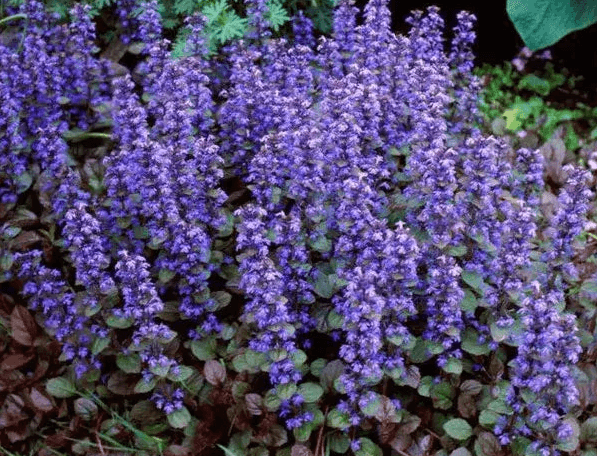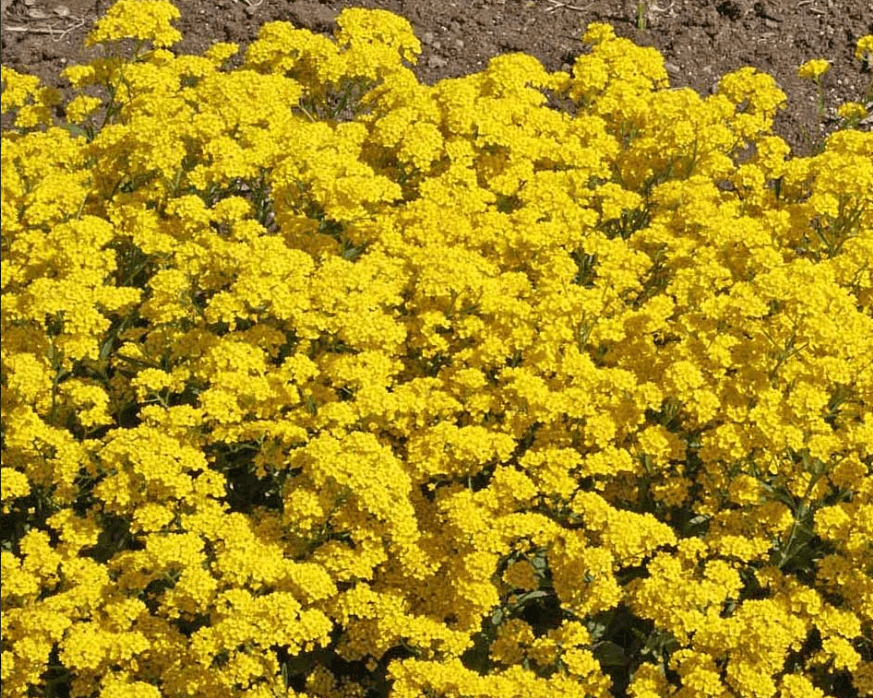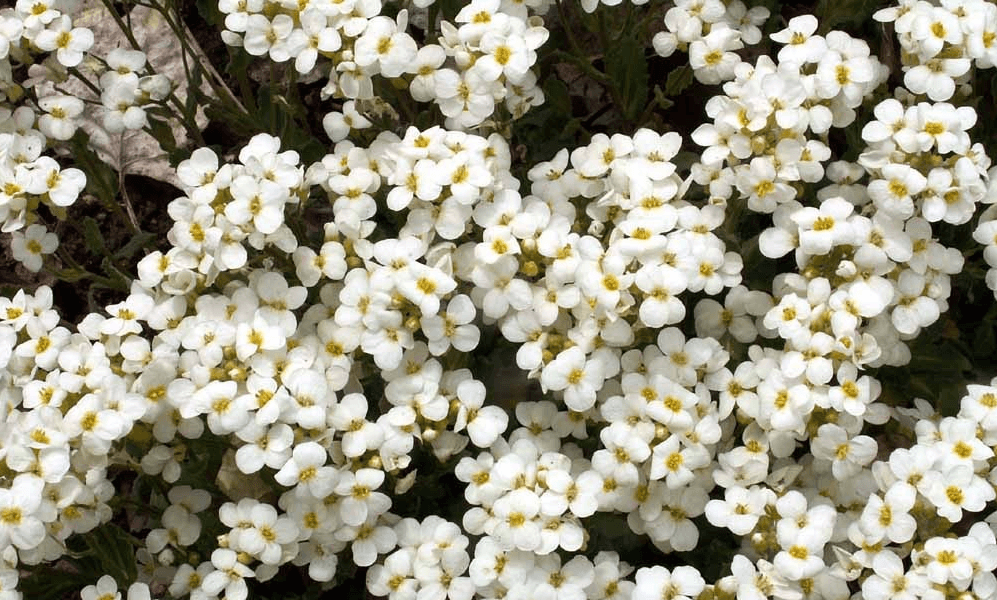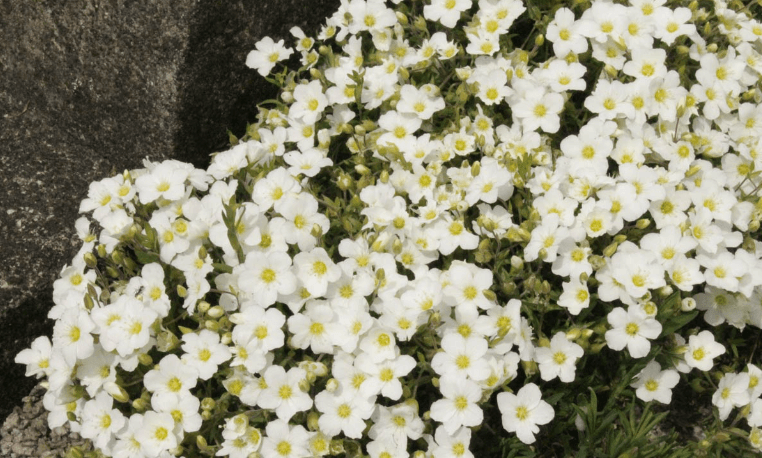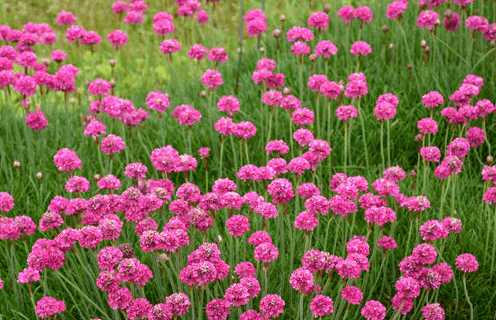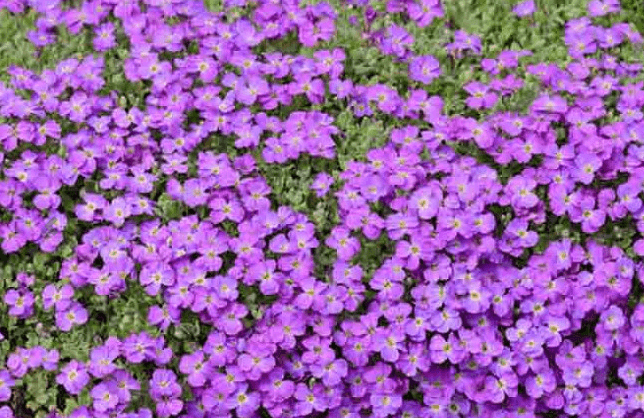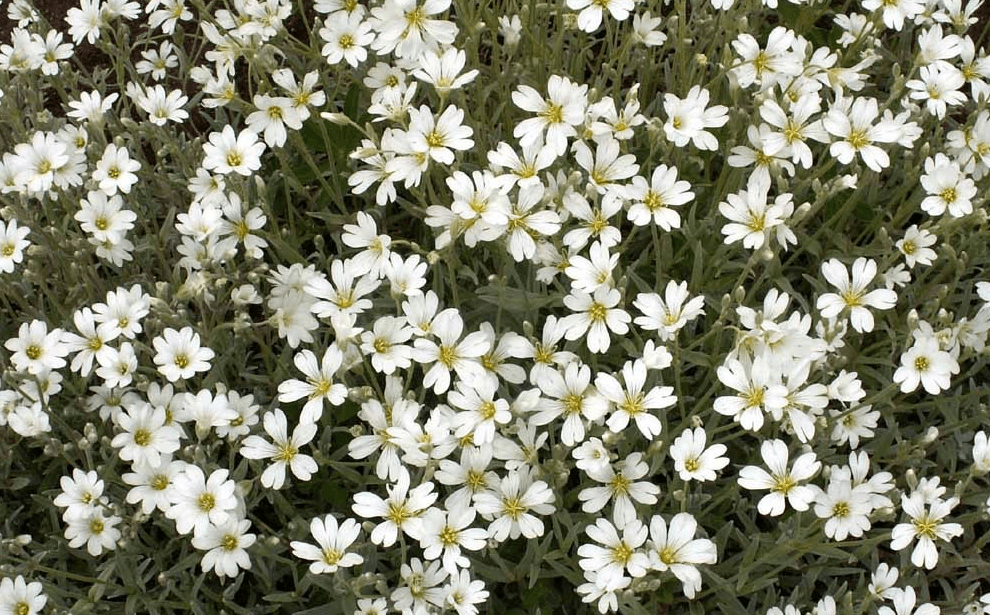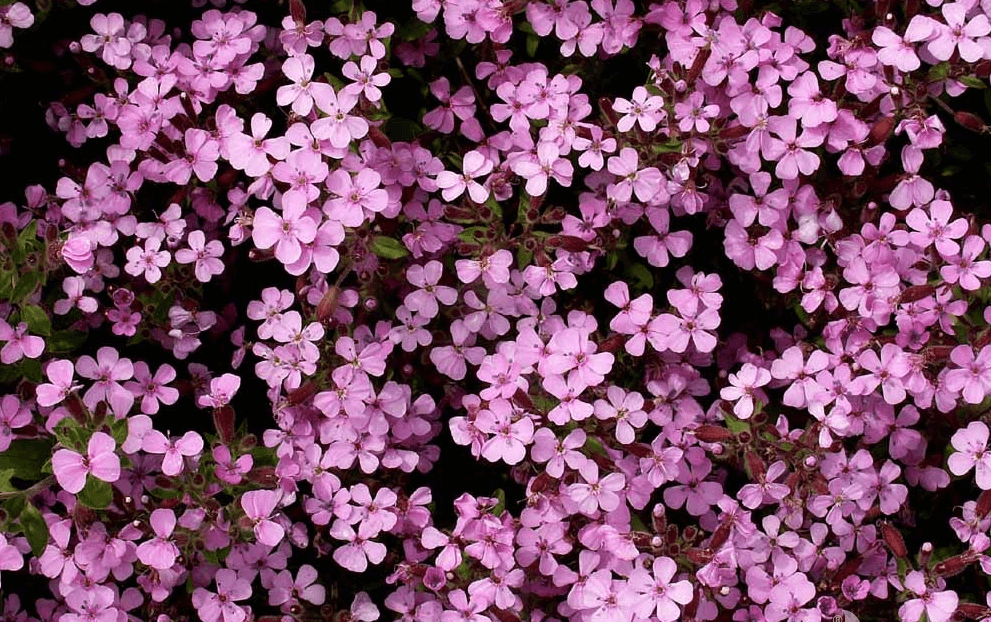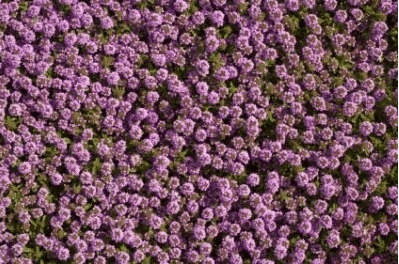Perennial ground covers, as you’ve probably guessed from the name, are used instead of grass to cover the ground. They can vary in height, colour, and shape but one thing they all have in common is that they spread. They can be a little slow to fill in but once established, they form a robust stand of compact plants, helping to crowd out weeds, enrich the soil, and shelter beneficial insects.
Perennial ground covers don’t require the regular mowing, fertilizing, and overseeding of traditional lawns. As such, they’re often used on slopes and other areas that are difficult to access or maintain. An increasing number of homeowners are also converting unused portions of their traditional lawns to ground covers to cut back on maintenance. Aside from replacing traditional lawns, perennial ground covers are popular in borders, around stepping stones, in shallow gravelly sites, and rock gardens. They’re hardy, low maintenance, and create visual interest by adding texture and colour to the landscape. There is so much room for creativity when incorporating ground covers into your garden.
If you’re sold on perennial ground covers, let us introduce you to our selection! But just before we do, it’s worth mentioning that the perennial ground covers we carry are better suited to sunny sites (ie 6+ hours of direct sun per day). If you’re looking to cover bare soil in a particularly shady spot, consider putting down mulch instead or head into your local garden centres and nurseries to see what options they have. Ground covers that are suited to heavy shade are usually sold as transplants because it is challenging and very slow to attempt those varieties from seed in heavy shade.
Ajuga reptens
Common names: Ajuga, Bugleweed, Bugleherb, Carpetweed
- Perennial to Zone 4
- Exposure: Partial shade to full sun
- Height: 6 inches
- Establishment period: 2 years
Aurinia saxatilis compactum
Common names: Saxatile Alyssum, Golden Alyssum, Rock Madwort, Basket of Gold
- Perennial to Zone 4
- Exposure: Full sun
- Height: 6-12 inches
- Establishment period: 2 years
Arabis alpina caucasica
Common names: Snow Cap, Rock Cress, Mountain Rock Cress
- Perennial to Zone 4
- Exposure: Full sun (or partial sun in zones 7+)
- Height: 6-10 inches
- Establishment period: 1 to 2 years
Arenaria montana
Common names: Mountain Sandwort, Sandwort
- Perennial to Zone 4
- Exposure: Full sun
- Height: 2-4 inches
- Establishment period: 2 years
Armeria maritima splendens
Common names: Thrift, Sea Thrift, Sea Pink
- Perennial to Zone 3
- Exposure: Full sun
- Height: 6-8 inches
- Establishment period: 2 years
Aubrieta cultoram
Common names: False Rock Cress, Purple Rock Cress
- Perennial to Zone 4
- Exposure: Partial sun to full sun
- Height: 6 inches
- Establishment period: 2 years
Cerastium tomentosum
Common names: Snow-in-Summer, Dusty Miller, Jerusalem Star
- Perennial to Zone 3
- Exposure: Full sun
- Height: 6-10 inches
- Establishment period: 2 years
Saponaria ocymoides
Common names: Soapwort, Rock Soapwort
- Perennial to Zone 3
- Exposure: Full sun
- Height: 4-6 inches
- Establishment period: 1 to 2 years
Thymus serpyllum
Common names: Creeping Thyme, Wild Thyme, Mother of Thyme
- Perennial to Zone 3
- Exposure: Full sun
- Height: 4-6 inches
- Establishment period: 2-3 years
Have you dabbled in the world of perennial ground covers yet? Share your experience in the comments!
Don’t hesitate to email our in-house garden team at [email protected] with any other questions you have! And tag us in your photos on Facebook and Instagram (@OSCSeeds); we LOVE to see what you are growing 🙂
Stay in touch!
Subscribe to our monthly newsletter!
Stay up-to-date on all our news by following us on Facebook and Instagram!
***

